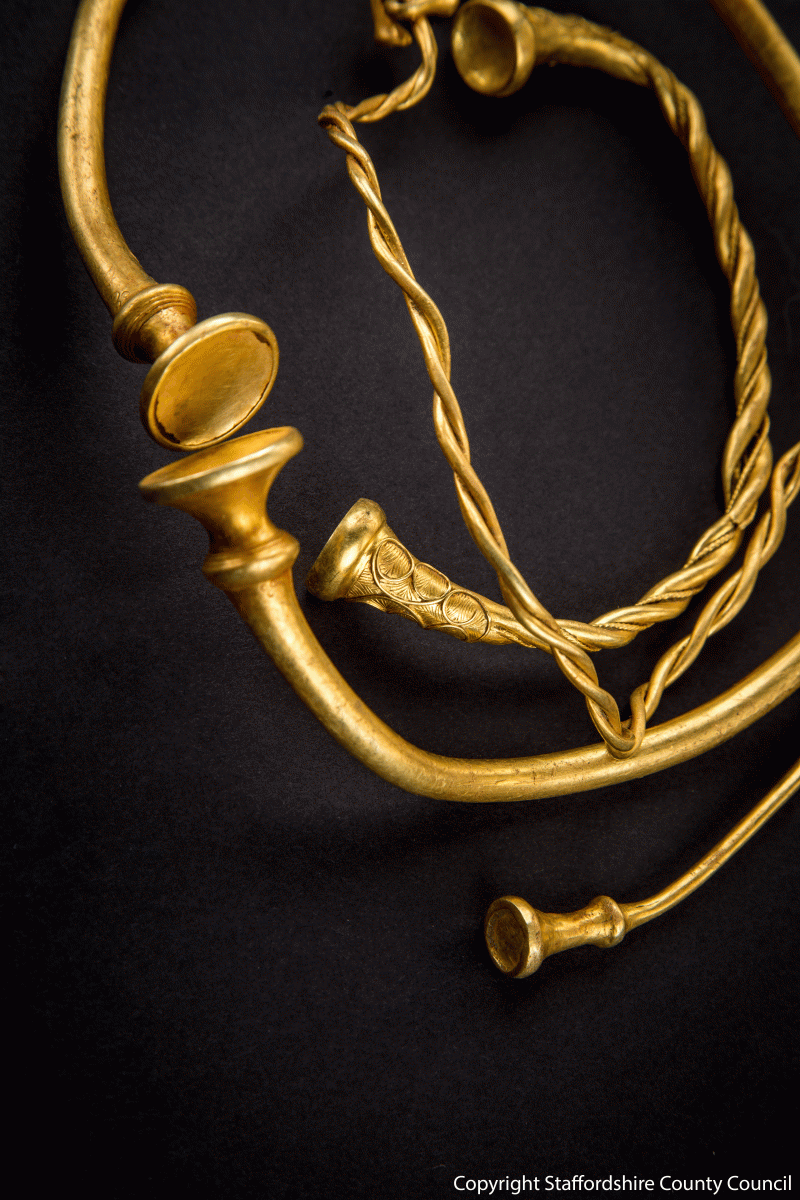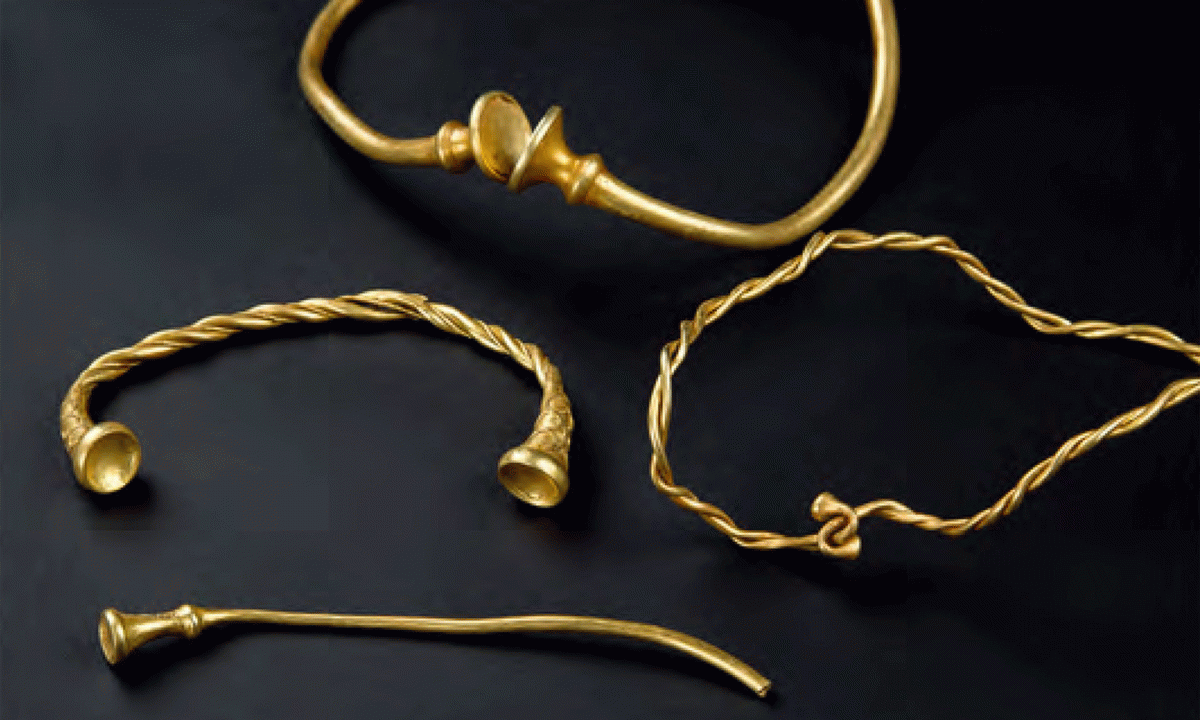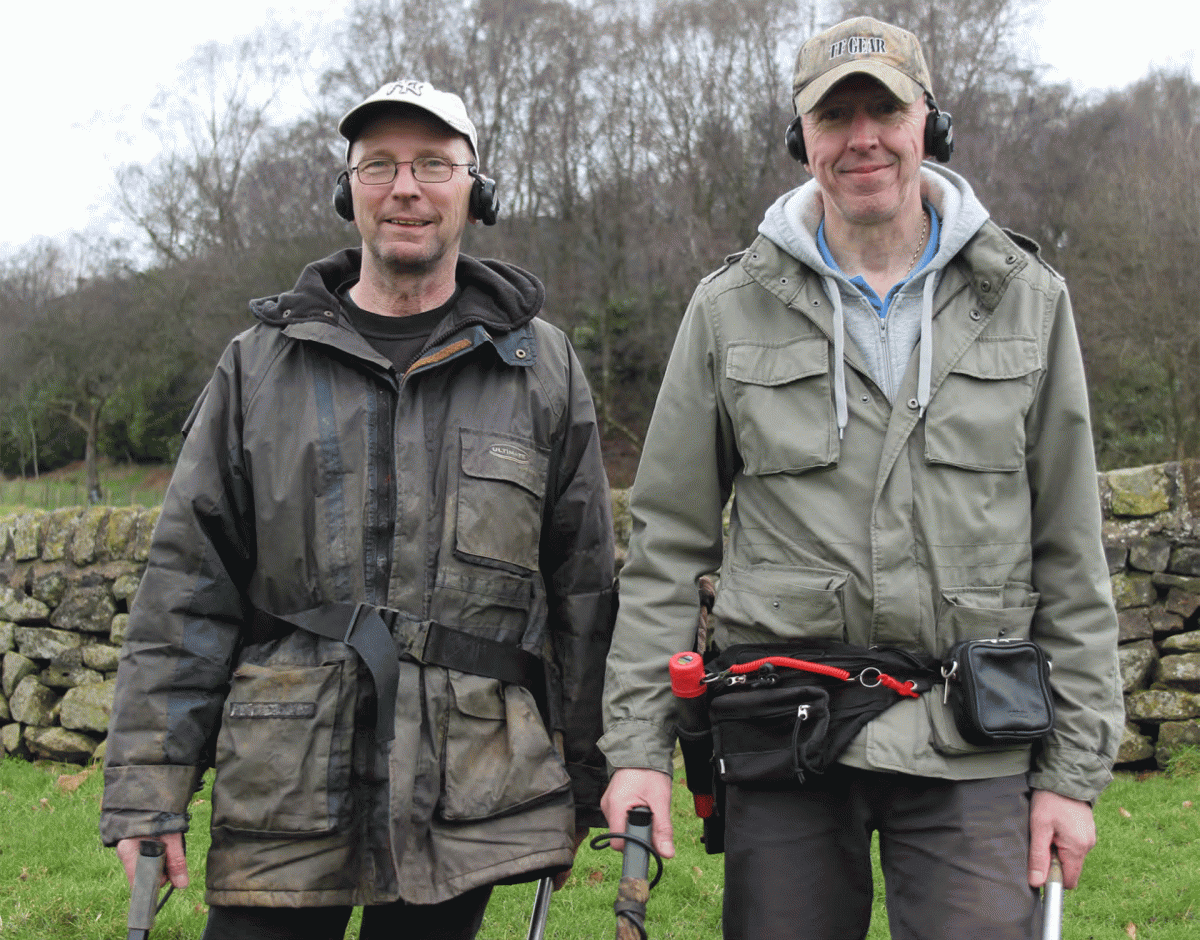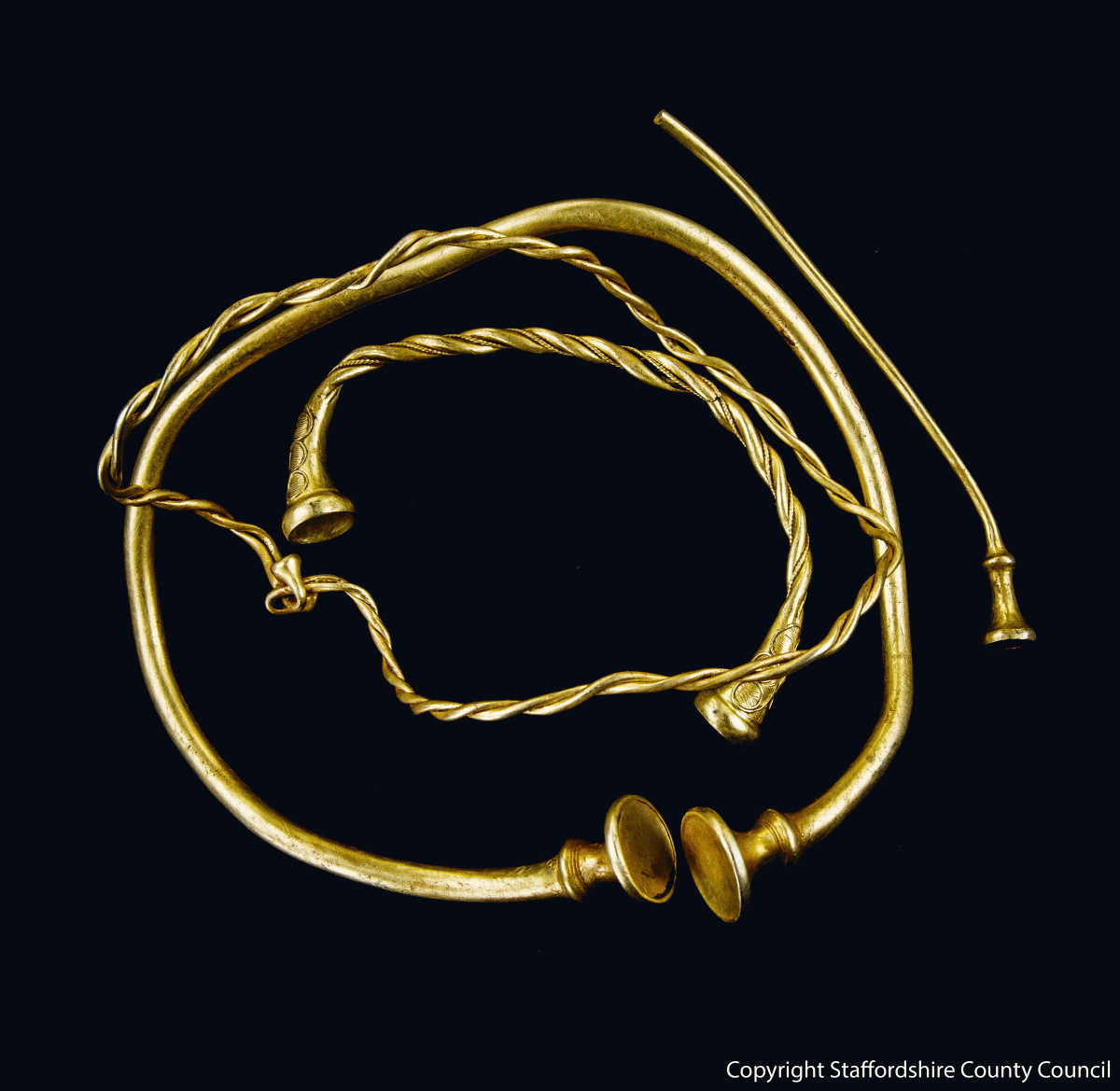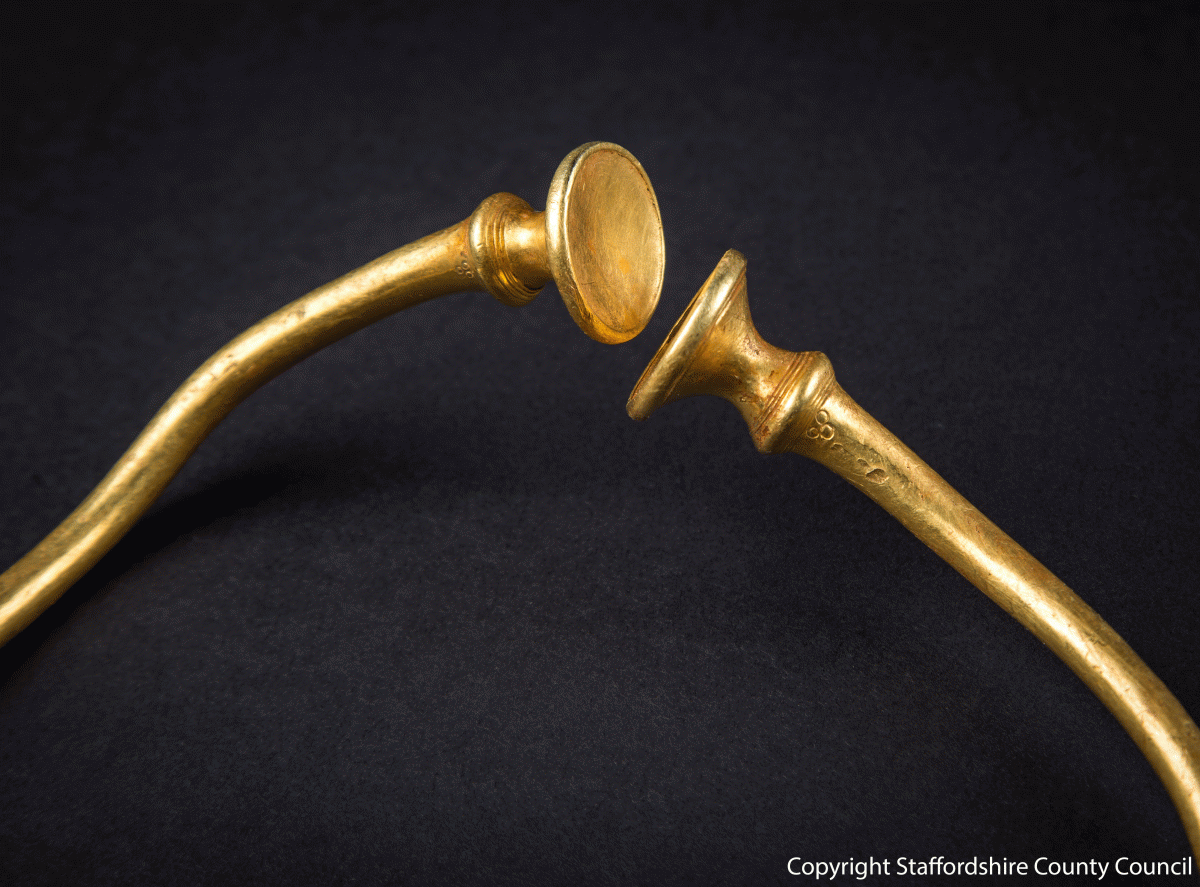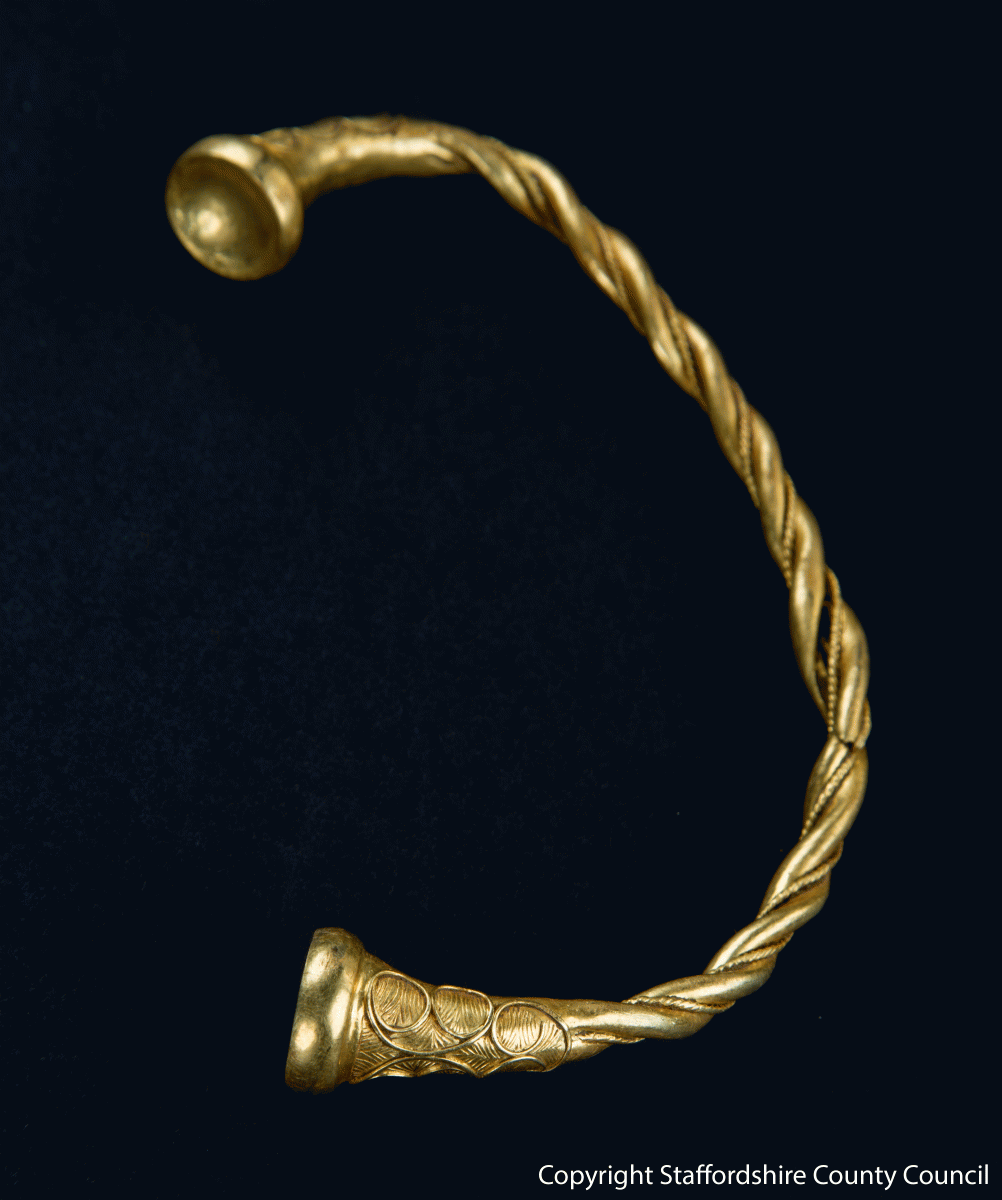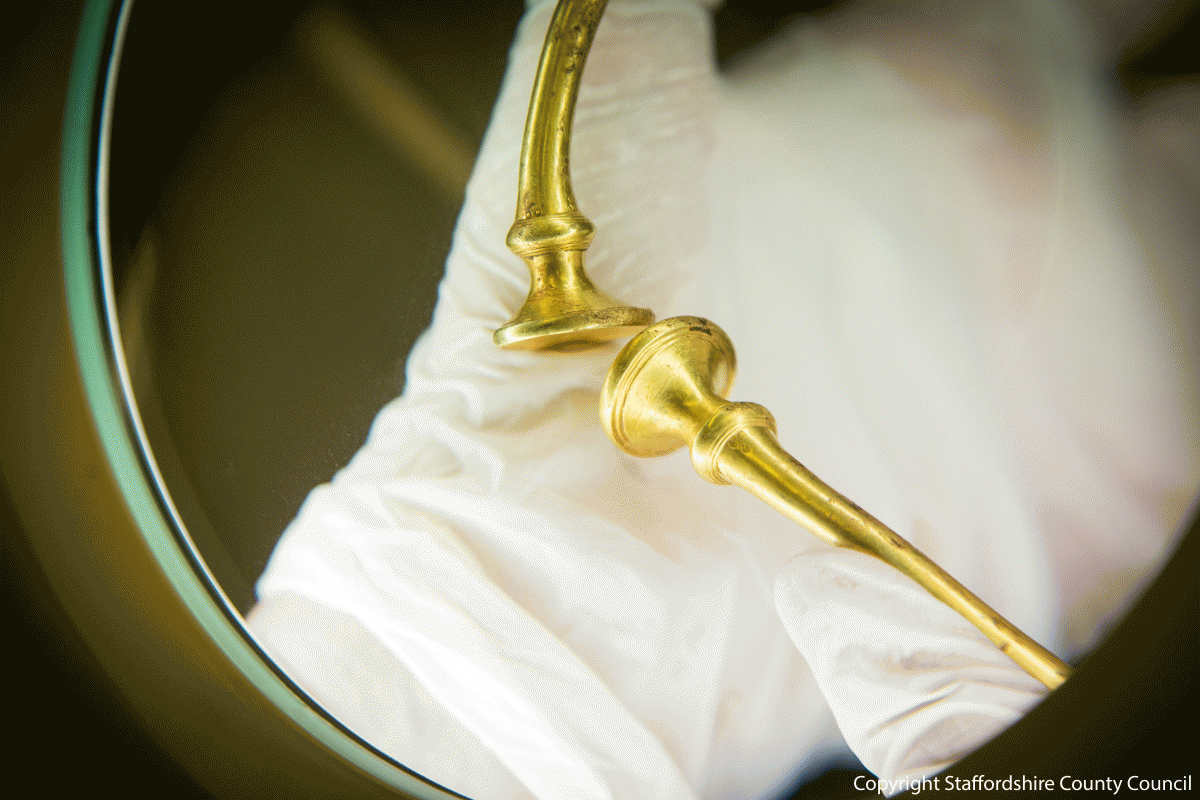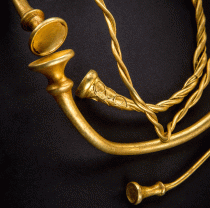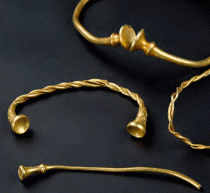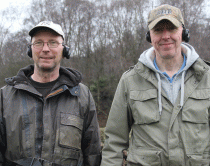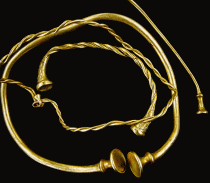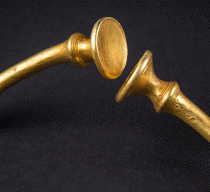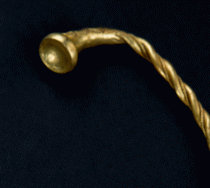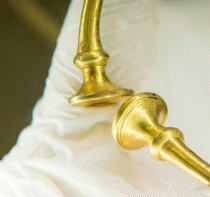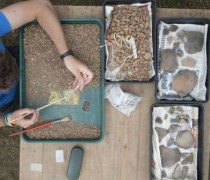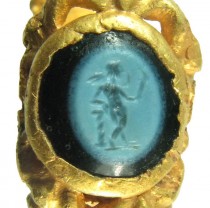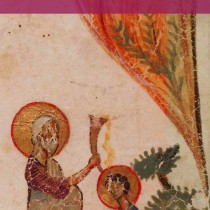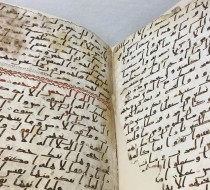An Iron Age hoard of gold jewellery was found in Staffordshire, UK, by two metal detecting friends.
The hoard consists of four gold torcs, three collars and a bracelet sized piece, which were made in the area of continental Europe, where today is Germany or France. They are possibly 2,500 years old or older, and are among the oldest examples of iron age gold found in Britain. One of the items bears beautiful Celtic ornament.
Dr Julia Farley, of the British Museum, said the torcs are “a unique find of international importance” and were probably worn by wealthy and powerful women who had perhaps come from continental Europe, marrying into the local community.
The collars have been named Leekfrith torcs, after the name of the site they were discovered at, and were found by Mark Hambleton and Joe Kania, two friends who had been using metal detectors. What’s funny is that they had searched that particular field twenty years ago but had no luck. They turned to fishing and two decades later they decided to give their old hobby another chance. This time, a plough had disturbed the pieces and the two men managed to locate them.
Once the two men found the pieces they reported to Teresa Gilmore, of Birmingham Museum, part of the Portable Antiquities Scheme. Archaeologists were sent at the site to conduct follow up investigations, but no trace of a settlement or grave was found. This is not uncommon in the area, since other hoards and pieces have been discovered in the past with no connection to a settlement or other structure.
The torcs were declared treasure by coroner Ian Smith on Tuesday and the two men who discovered the hoard, as well as the owner of the field, will share the reward which will be defined after a valuation committee has examined the items.
The new gold will now be acquired by a museum, but the cost for that will be defined by the valuation committee and institutions claiming the hoard will also have to pay the reward of the finders and landowner.
